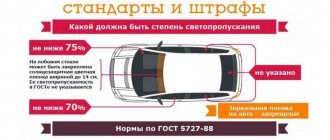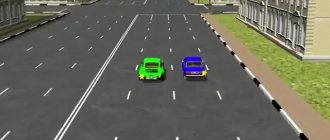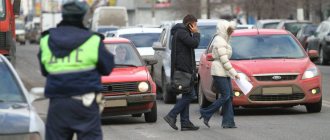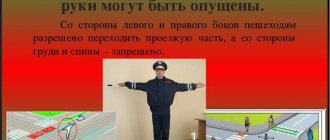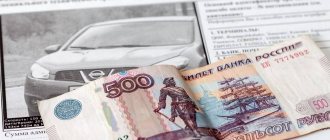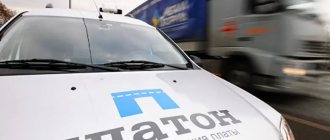Table of contents
- Who has the right to measure
- How is light transmittance measured?
- Norms
- Regulatory acts
- Measurement Rules
- Inspection violations
- Possibilities for canceling the fine
- conclusions
If you decide to darken your car windows, you should know the rules for measuring tint. This will help avoid a fine. In general, there are quite a lot of myths and inaccurate data on this issue. Let's figure out in order who has rights to what, as well as how to avoid problems when meeting with a traffic police inspector.
Who has the right to measure
Contrary to popular belief, any traffic police officer can take measurements. He does not require any additional clearances. It is also allowed to take measurements anywhere.
Rumors that measurements are taken only at stationary points have a basis in reality. The fact is that until recently Order No. 1240 was in force, which indicated that tinting checks could only be carried out at checkpoints or certified technical inspection points. Now this norm has been canceled.
It turns out that the check can be carried out by any traffic police officer, and anywhere on the road. He should not have any additional permits or documents.
Taumeter "Light" - a device for measuring the transparency of glass
Another device that is included in the State Register of Measuring Instruments is the “Light” device. Unlike Blik, it is used less frequently by traffic police officers, but this does not exclude the equipment from the list of used taumeters. This device is a stationary device of continuous operation with the following technical indicators:
- complies with GOST standards and norms;
- measurements can be taken at any time of the day;
- the air temperature when determining transparency should vary between -40°C and +40°C;
- the tint measurement procedure will take a minimum of time – 5 seconds;
- probability of error of indicators -/+ 2%;
- results are processed automatically and displayed on a digital indicator;
- can work autonomously, from the built-in battery, which needs to be charged from time to time.
How is light transmittance measured?
For measurements, only certified devices must be used, which must be registered in the Russian register. The following measuring instruments are currently approved.
- Tonic (in register No. 44919-10). Capable of measuring not only neutral-colored glass, but also colored glass. Has a built-in memory of 3 results. You can enter the car number into the protocol. If necessary, you can connect the device to a central server and transfer data directly there. Measures light transmission qualitatively. There are no problems even on thick glass. Battery operated.
- Blik-N (in register No. 35807-07). One of the most common devices. Has a digital display. Calibration occurs automatically. It is possible to measure tint on glass with a thickness of 3–10 mm. There is a limitation on the ambient temperature; measurement is possible in the temperature range from –10°C to +40°C. Has a built-in battery
- Light (in register No. 20761-11). Measures the light transmission of glass with a thickness of 3–6 mm. Designed to test transparency between 1-99%. Can be used at temperatures ranging from –40°C to +40°C.
Important!
All devices have an error of 2%. Therefore, if, when checking the glass, it turns out that it transmits 69% of light rays, the inspector has no reason to issue a fine.
All devices must have a valid certificate. A document confirming a passed state inspection is required. The device must be sealed.
Window tint measuring device
In order to understand what a taumeter is, you should understand what the instructions for its operation are and at what temperature such a device operates.
It would also be useful to understand under what conditions the light transmittance of glass is checked, and how much such a device will cost.
All this information will help you communicate competently with the inspector and stop violations of legal norms, which often occur on the roads.
User manual
Taumeters used by traffic police officers must comply with certain standards established for use.
For example, it is possible to operate them without violations only at temperatures no higher than forty and no lower than -10 degrees Celsius.
One of the newest devices, “Svet,” allows operation at -40 degrees, but the upper limit does not increase. If such requirements are not followed, the readings will be distorted.
Any devices accepted by the traffic police can measure tinting both at night and during the day, and humidity must not exceed 95%, although even with this indicator errors are possible.
Therefore, inspection is prohibited during rain and snow. The thickness of glass differs for different devices, for example, “Blik” can measure thickness of 3-10 mm, “Light” gives true data at 3-6 mm, and “Tonic” works correctly with glass no more than 20 m thick.
Rules for measuring car light
To begin with, you should understand that the procedure for measuring the light transmittance of glass has its own rules that must be followed.
For example, it must have seals, and the imprint must match the state inspection certificate.
The device must also have a passport, and it is better to calibrate it before use. This can be done by directly combining the light source and its receiver.
When measuring light, at least three procedures should be carried out at different points on the glass to avoid errors, and the glass must be clean and dry.
If it is dry but dirty, then it is wiped on both sides to eliminate such an error.
Most common models
Most often, traffic police officers use three types of devices: “Blik-N”, “Svet” and “Tonic”, which are approved by Rosstandart and also included in the state register of measuring instruments.
To operate “Blik-N” you need a voltage of 12V, and the temperature should not be below -10 degrees and above 40. At high humidity it may show an error, but it weighs 900 grams.
Photo: Blik-N device for measuring tint
A more advanced device is “Light”, which works even at -40 degrees, makes it possible to measure light both day and night, but its weight is almost 1.5 kg.
Photo: Light device for measuring tint
And finally, the “Tonic” tint measuring device has the following technical characteristics: it even works with glass up to 20 mm thick if there is a voltage of 3.6 V.
Photo: Tonic device for measuring tint
Its temperature regime is the same as that of “Blik-N”, it is held on the glass manually, but weighs only 0.5 kg, which minimizes the inconvenience when measuring light transmittance.
Technical characteristics of the taumeter
The most common taumeter today is the “Light”, which can measure the luminous transmittance of glass in the range of 20-99%, and its error is only 2%, while it can show 10-99% of the glass transmittance, but only works with 3-6 mm glasses, while “Tonic” can examine glasses with a thickness of up to 20 mm.
“Light” takes all measurements in 5 seconds, and requires 3.2 W of power to operate. Operation without errors is guaranteed from -40 degrees to +40 degrees.
“Tonic”, a device for measuring tint, has approximately the same characteristics, but with an operating temperature of only -10 degrees.
The device itself consists of a coefficient meter, a calibration glass, a battery, cables, a charger and a bag for transportation.
Is it possible to use red film for tinting headlights, see the article: red tinting. Read here about the specifics of issuing a power of attorney to drive a car from a legal entity abroad.
In this configuration, the whole mass is 1.4 kilograms, and the device itself consists of two parts - an emitter and a receiver, which are centered relative to each other during the measurement process.
Who is checking?
Absolutely any traffic police officer, that is, the traffic police, who has the necessary device with all the documents, can check the level of light transmission of glass.
No one else can inspect and impose fines if the tinting suddenly does not meet accepted standards.
It is forbidden to check tinting for employees of other police departments; such powers are given only to the traffic police, they have undergone special training and have all the necessary skills in handling the equipment.
And regarding tinted headlights, you should remember that the check is carried out during technical inspection, and if the standards are not met, the car will not be allowed to operate, as well as the rear lights.
Where is it carried out?
Checking the light transmittance of car windows is carried out not only at a stationary traffic police post, as before, but also anywhere.
At the same time, standards regarding humidity and cleanliness of glass must be observed. When it rains or snows, the inspector must ensure that the inspection takes place in a clean, dry area that has all the necessary equipment and available power.
Thus, the inspector can stop the car on any road and in any place, offering to undergo an inspection if this is possible due to weather conditions.
The law does not say that if weather conditions do not allow an inspection, then the driver must go to the checkpoint.
On the contrary, if the inspector insists on conducting an inspection at the post, he should be reminded of the law.
He must release the driver, since he has no right to force him to move to the post in this case.
Video: Light device for measuring car window tinting
How much does this device cost?
The cost of tint meters starts from 20 to 30 thousand rubles, and depending on the type of taumeter and its characteristics, the price may vary.
You can also purchase devices used by the traffic police, but their range is much lower than that of ordinary household taumeters.
Some stores offer discounts for customers, so you can buy such a device cheaper.
Most often, taumeters are purchased by specialized services and, of course, by the state, so that the level of tint can be determined quickly and accurately.
Norms
According to current GOSTs, only the tinting of the windshield is standardized; it must transmit at least 70% of the light. There are no light transmission requirements for tinting the side windows. Here is the rear window, if there are no mirrors on the side, it is equal to the windshield, therefore it should not have a surface with a light transmittance of less than 70%
A case from one's life.
The driver damaged his side mirror in the parking lot. I also removed it from the other side, deciding to make do with only the central one before buying new ones. The car was tinted according to the rules. Side and rear 50%, windshield let in 75% of light.
When stopping, the traffic police officer noticed the absence of side mirrors and measured the level of light transmission of the rear window. A fine was issued for violating the tinting rules, but it was not possible to challenge it.
It is also worth considering that mirror and color films are prohibited, the rules prohibit the use of “chameleon”. You can also get a fine for such tinting on a car.
Regulatory acts
Now the traffic rules mention GOST 33997-2016. It is this document that regulates what tint can be used on a car. It states that for a windshield it must transmit at least 70% of light rays. It also indicates what types of tint can be used.
GOST 33997-2016 is fully unified with the Technical Regulations of the Customs Union TR CU 018/2011 “On the safety of wheeled vehicles”. In fact, these are interchangeable documents. It’s just that it’s much more familiar and convenient for traffic police officers to refer to GOST.
It is definitely worth mentioning Order of the Ministry of Internal Affairs No. 664. It was he who allowed us to check the tint anywhere. Until December 2021, inspections were allowed only at traffic police posts. Now this action can be performed anywhere. There is an exception - the permissible places are determined by the local traffic police department, but they leave this item by default, without limiting the actions of inspectors.
The inspection rules are regulated by GOST 27902-88. This document describes in detail the conditions and technical actions when checking a vehicle for the degree of light transmission. Do not be confused by the “antiquity” of this GOST, it has not yet been canceled, and it is unlikely that it will be changed in the near future.
Measurement Rules
Currently, inspectors do not receive special training on how to measure tinting correctly. They usually use the instructions included with the taumeter device. According to these recommendations, they check whether the tinting complies with the standards or not.
First, we will study GOST 27902-88. This is what is written there regarding the conditions for measuring the degree of light transmission of automobile glass.
- The ambient temperature should be 20°C, but a deviation of 5° in one direction or the other is allowed.
- Atmospheric pressure should be between 86–106 kPa.
- Relative air humidity 60%, deviation of 20% in one direction or the other is allowed.
After reading these requirements, you might think that taking tinting measurements on a regular road is almost impossible. But here it is worth paying attention to the tolerances. In fact, it is possible to check the tint under almost any conditions. Although there are some exceptions, we will talk about them at the end of the article. For now, it’s enough to accept it as a rule - there are practically no restrictions on measurements.
Important!
The readings of the device are not affected by the time of day, degree of illumination and precipitation. This is quite logical; the degree of light transmission does not depend on whether it is raining or not.
In practice, tinting is measured by an inspector in accordance with the instructions of the measuring device. Almost all taumeters have approximately the same requirements; only the layout of the device may differ. Let's look at how to check the level of light transmission with the most popular taumeter - "Blik-N".
- Make sure the car engine and ignition are turned off. This will help to avoid interference from the relay regulator; problems may also arise in the high-voltage circuits of the machine.
- Power is connected. If you are using offline mode, turn it on. If from other sources, we connect using the special cord included in the kit.
- When moving from a warm room to the street, you should wait at least 15 minutes before using the device. This will minimize the risk of measurement error.
- We check the heads for freezing and fogging. If such a problem is identified, you need to thoroughly wipe the receiving and transmitting heads.
- We turn on the taumeter and make sure that all indicators are working.
- Before taking measurements, we calibrate the device. Use the pen to set the indicator to 100%.
- Remove the heads and place them on the glass. They are magnetic, that is, they attract each other, you need to bring them to the glass carefully so as not to damage it, especially at low temperatures.
- We shift the transmitting head relative to the receiving one. Let's see in which position the coefficient will be the largest. We multiply this indicator by 100, as a result we get the percentage of light transmission of the tint.
It is recommended to measure at 2-3 points on the glass. This way you can avoid mistakes and random errors. The developers took this point into account; up to 3 checks are stored in the device’s memory.
The inspector must enter vehicle identification information. Usually a license plate number is used, this makes it easier to associate testing and a specific car. The report attached to the protocol will indicate the degree of light transmission, as well as identification data
Sometimes mistakes happen. An employee made a mistake in one digit when entering data. As a result, the court canceled the protocol, considering the obtained measurement results unreliable.
Drivers are often outraged that tinting is measured on dirty glass. In fact, there is nothing criminal here. There are no regulations stating that glass must be perfectly clean. And in fact, dirt on the glass does not greatly affect the level of light transmission. And if your car is so dirty that the taumeter shows a low percentage of light rays passing through, it’s time to wash it.
Rules for measuring tinting
From the information given earlier it follows that not only a traffic police inspector, but also any other police officer with a special rank can measure the light transmission of car windows.
The action can be carried out not only at a stationary post, but also in any other place. However, if the latter has suspicions that the car’s tinting does not comply with established standards, and he does not have a taumeter with him, he has no right to force the driver to drive with him.
The measurement procedure is carried out in relation to the documents governing it, the main one of which is GOST 8.831-2013, compiled on the basis of the GOST standards given below.
Based on these papers, the process of checking the light transmittance of car windows has a number of features that it is advisable for every car owner who uses a tinted car to know:
- According to clause 76 of the Administrative Regulations of the State Traffic Safety Inspectorate, the device must have a certificate confirming that it has passed the annual test and has a seal on the case.
- The readings of the device may be affected by weather conditions, for example, according to GOST 8.831-2013, the ambient temperature should be in the range from +23 to + 27 ⁰С. However, if we take as an example the operating manual for the Blik-N device, there is information that “..remains operational under cyclic exposure to temperatures from -1 to +20⁰С.” Such a discrepancy in 2 official documents is often used by legally literate car owners to challenge unlawful protocols in the courts.
- The taumeter error may exceed established standards when taking measurements under conditions of low or high atmospheric pressure. The optimal interval is considered to be from 560 to 800 mm. mercury column.
- The time of day does not affect the measurement result with modern instruments.
- Increased moisture content in the air can also affect the readings; the minimum percentage of error in this case will be under weather conditions between 45 and 85% humidity.
- The measurement process itself must be performed at 3 points. Failure to comply with this clause is a gross violation on the part of the police officer, invalidating previously received information.
- The degree of darkness of the rear windows is not standardized - this condition is prescribed in GOST 32565-2013 “Safety glass for land transport”, clause 5.1.2.5.
Note! GOST 27902-88, often mentioned in automotive forums, is outdated and was canceled on October 1, 2015, and the previously specified 8.831-2013 was introduced instead.
Despite the fact that any coincidence with a specific case of any of the above situations cancels the previously obtained indicators, the inspector will first draw up a protocol on an administrative offense in accordance with paragraph 3 of Art. 12.5 of the Code of Administrative Offenses of the Russian Federation “Driving a vehicle in the presence of a malfunction or a condition prohibiting its operation.”
In this case, the driver will have only 2 options:
- Pay a fine of 500 rubles. , and with the condition of Federal Law No. 437 dated December 22. 2014 “Polite Driver”, which made adjustments to Art. 32.2 “Execution of the resolution on the imposition of an administrative fine” of the Code of Administrative Offenses of the Russian Federation, within 20 days from the date of the resolution, he can pay only half the cost, that is, only 250 rubles. 2. Appeal the actions of the inspector represented by higher management or in court within 10 days. In this case, it is necessary to indicate in the protocol that you do not agree with the decision, since the measurements were carried out in violation of the conditions necessary for performing measurements according to the information presented in GOST 32565-2013. Next, you need to list which conditions were not met.
Based on judicial practice, it makes sense to argue only if the percentage of darkness is in the value corresponding to the standards or is located close to it, since first of all a repeat measurement process will be assigned.
Only after this will the final picture of what is happening be drawn up and the final decision made.
Inspection violations
In some cases, inspectors intentionally or through oversight commit various violations. These points should be monitored and then recorded in the protocol.
Be sure to check the certification of the tint checker. If he does not have documents, the research should not be carried out. You don't know where you got it from. Although such a violation is extremely rare. Usually, traffic police crews are supplied not only with equipment, but also with a full set of documents.
Ask to see the device. It must be sealed. Again, if there is no seal, perhaps someone dug into it, and the taumeter can show any data, but not real data. This kind of violation occurs regularly, and not always consciously. Police officers may accidentally touch the seal. But, in any case, you cannot measure tint with such a device.
The inspector makes only one measurement. He can specifically choose a place that, for some reason, has less light transmittance. For example, he will see a small chip. In this case, it turns out that you are a violator. Be sure to require three measurements at different points on the glass.
Some traffic police officers have truly dexterous hands. They manage to place a piece of film under the measuring head. This allows you to get a result that will suit the inspector, but you will not like at all. To avoid this, watch the policeman's hands carefully. If in doubt, ask to see a taumeter to check for fogging or foreign objects.
In some cases, you can be sure of your innocence. Here it is worth asking to repeat the tint check, but in the presence of witnesses. This is not necessary, so the inspector can conduct an inspection without the participation of witnesses. In principle, this is not very important to you either, so there is no need to insist. Although if you are sure that the policeman is violating something, it is better to ask for the participation of witnesses.
It is also a violation to measure at a temperature that differs from the recommended range of 15–25 degrees. But here the inspector violates it out of ignorance; he is guided by the recommendations specified in the instructions for the device. And, there the temperature range is much greater.
A case from one's life
The inspector stopped a car with minor tint. After measurements, it turned out that the glass transmits only 60% of light rays. The driver was not satisfied with this; he demanded a repeat check in front of witnesses.
The inspector stopped the first car he came across. The driver, in the presence of witnesses, asked to wipe the instrument heads and take measurements. This time the taumeter showed light transmittance of 80–85%, which is not a violation.
Rules for checking the transparency of car tinting
As you know, this type of film covering car windows causes controversy and complaints among law enforcement officials. In Russia, a law was passed that specifies standards for the transparency of tinting and the slightest violation of it entails a fine . It should be noted that to determine transparency, only taumeters that are certified by the Scientific and Technical Commission for Metrology can be used. Thus, the determination cannot be done by eye, but only with the appropriate equipment.
When checking transparency, it is very important to adhere to certain rules that are specified in GOSTs. These parameters include:
- determining the transparency of the tint should take place at an air temperature of at least – 40°C;
- A taumeter is a device for determining that can work both in the light and in the dark. This does not affect the device readings;
- during fog, the transparency of the tinting on the car glass, and specifically the accuracy readings taken, may decrease;
- before tinting, you must check the percentage of transparency of the glass that will be tinted in the future and, based on the indicators of clean glass, you need to select the appropriate film for tinting;
- You must know that the taumeter on your monitor does not show the percentage of tinting, but the percentage of the light flux that passed through the special film. If an indicator of less than 8% is marked on the screen, then this does not comply with the norms and standards of GOSTs, so the car owner will have to pay a fine. On the website of the RosShtrafi service you can quickly find out traffic police fines and pay them there with a bank card.
Possibilities for canceling the fine
It was already mentioned above that there are completely legal ways to cancel the protocol. And they really work. The easiest way is to refer to measurements under inappropriate conditions. To do this, you need to disagree with the protocol when signing. Then he will go to court.
During the court hearing, you must refer to GOST 27902-88. It lists all the environmental parameters under which glass transparency studies should be carried out. In practice, there are very rarely situations where the measurement takes place at a temperature in the range of 15–25°C. This means there is every chance of avoiding a fine. Point out the weather conditions to the judge; the easiest way is to do this in the winter, when there clearly cannot be above-zero temperatures.
But, most often, the protocol does not indicate temperature conditions or humidity indicators at all. In this case, you can also report violations during the inspection. Since the protocol does not contain data on temperature and humidity, the court may well find such a dimming measurement illegal. Quite a lot of such decisions are made throughout the country.
Just don’t talk about temperature and humidity directly to the inspector. He will enter this data into the protocol, and you will lose a significant chance of challenging the protocol.
Classification
The most common devices in Russia for measuring the level of tint, which can often be seen by an inspection inspector, are “Blik-N”, “Tonic” and “Svet”.
These types of luminous transmittance meters for automobile glass are approved by Rosstandart. Records about them are included in the State Register of Measuring Instruments (State Register of SI). Registration of the specified meters in the registry means that the devices have been tested by state testing centers and are approved for use in the Russian Federation. They comply with GOST 51709-2001 on testing methods and GOST 27902-88 on determining optical properties. Verification tests are carried out in laboratory conditions in accordance with the requirements established by the standards:
- temperature Celsius ranges from 15 to 25 degrees;
- pressure from 86 to 106 kPa;
- Relative humidity readings range from 40 to 80%.
Every year, all devices are re-tested by government centers for certification. When measuring with these devices, an error of no more than 2% is allowed. The differences are determined by the ability to work under different operating conditions.
"Blik-N"
For correct operation of the device, a supply voltage of 12 V is required. Tint measurements can be carried out both during the day and at night. The ambient temperature should be within the range from -10 to +40 degrees Celsius. "Blik-N" allows you to measure tint on glass with a thickness of 3 to 10 mm. It is allowed to work at a relative air humidity of up to 95%, but it should be borne in mind that the higher this indicator, the more “Blik-N” can show a larger measurement error. Weight is about 900 g.
Unlike the Blik-N device, it has a wider temperature range. “Light” can operate from -40 to +40 degrees Celsius. It also allows you to measure tint at any time of the day. The width of the tested samples must be no less than 3 and no more than 6 mm. Heavier, as it weighs 1 kg 400 g.
"Tonic"
The thickness of the glass being measured should not exceed 20 mm. “Tonic” operates with a supply voltage of 3.6 V. The recommended ambient temperature is from 10 degrees below zero and no more than 40 degrees Celsius. “Tonic” has a small weight of 500 grams. Can work both day and night. The “tonic” is held on the glass manually, therefore, for the accuracy of the readings, the study should be carried out with special care.
100% PROTECTION FROM TRAFFIC CAMERAS - NANOFILM! More details at the link
- Hides the number from cameras and radars.
- Begins to operate immediately after installation.
- Quick and easy to stick.
- Number protection for up to 2 years.
WHAT DO YOU GET THANKS TO NANOFILM
- 100% hides the number from traffic police cameras in any weather.
- The protection cannot be detected by the eye.
- Holds firmly in any weather and after washing the car.
NANOFILM is completely invisible to the human eye.
Source
conclusions
Any traffic police officer has the right to measure tinting, regardless of where the vehicle is stopped. There is no point in hoping that you will not be checked; it is still better to use only film that is acceptable for use.
Measurements must be made under certain conditions, only with a fully functional and certified device. Knowing the rules for checking glass for transparency will help you avoid a fine.
If, nevertheless, the protocol was issued, in many cases it can be appealed. You just have to spend a little time visiting the court. Point out any violations made during measurements, usually this is the absence of the specified temperature, in some cases you can mention the non-compliance of the measurement conditions with the recommended parameters.
The Blik device is a common device for measuring glass transparency
Today, there are a large number of special devices that determine the level of transparency of tinting. But among the special equipment on the market, several taumeters stand out. The most common device, which is most often used by traffic police officers, is the Blik device.
It should be noted that, despite the fact that the equipment is included in the State Register of Measuring Instruments, it must have a special label indicating that the taumeter has passed state inspection and can be used to check transparency. If for some reason it is missing or the seal is broken, then all tinting indicators can be considered inaccurate.
The main features and technical characteristics of the equipment include:
- measurements can be carried out at any time of the day;
- indication of measurement readings - digital;
- data errors may vary from -/+ 2 – 4%;
- the optimal air temperature at which the device will operate can vary from -10°C to +40°C;
- can be powered by a built-in battery;
- inspection by special services should be carried out once every 12 months.
